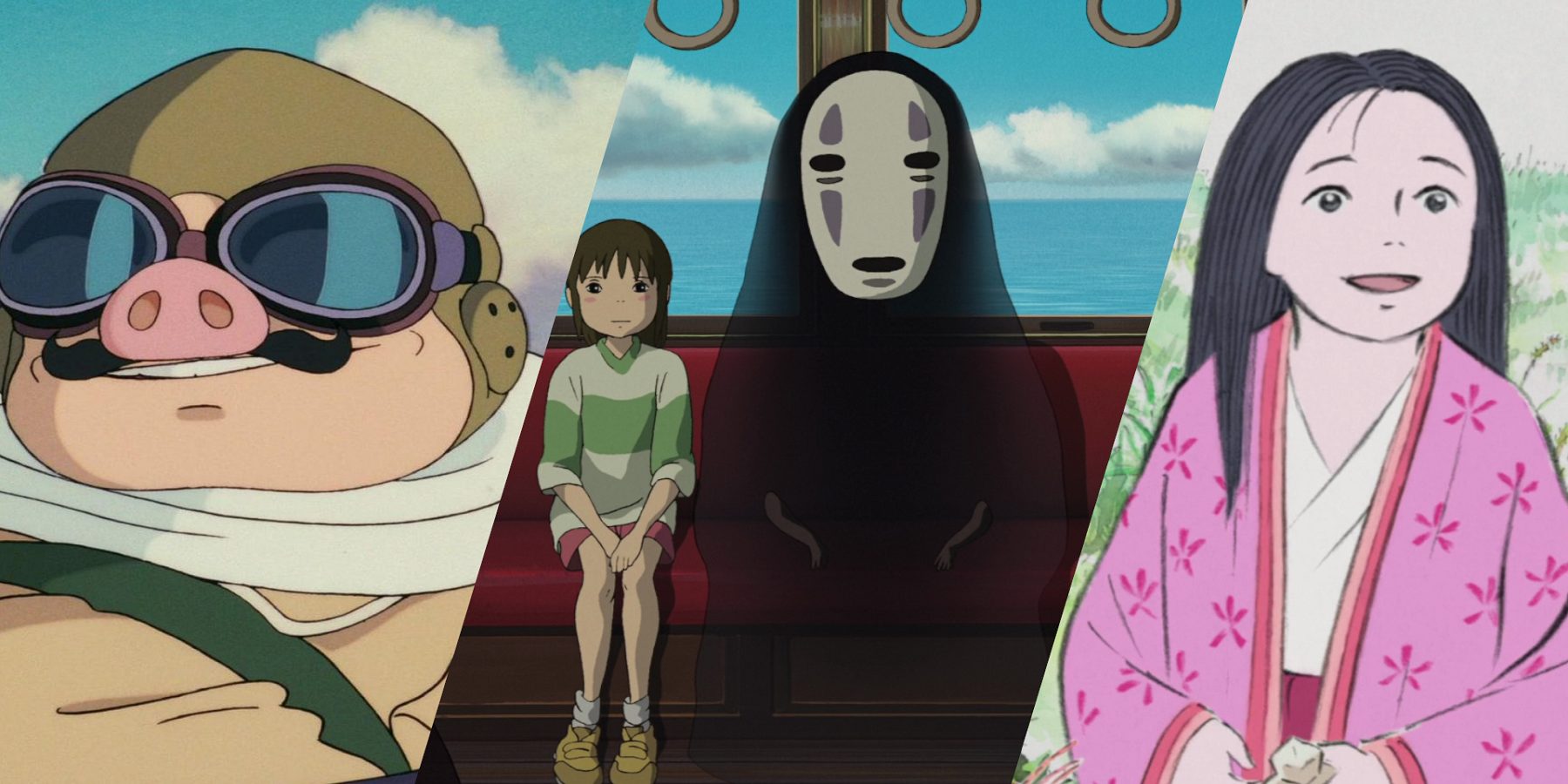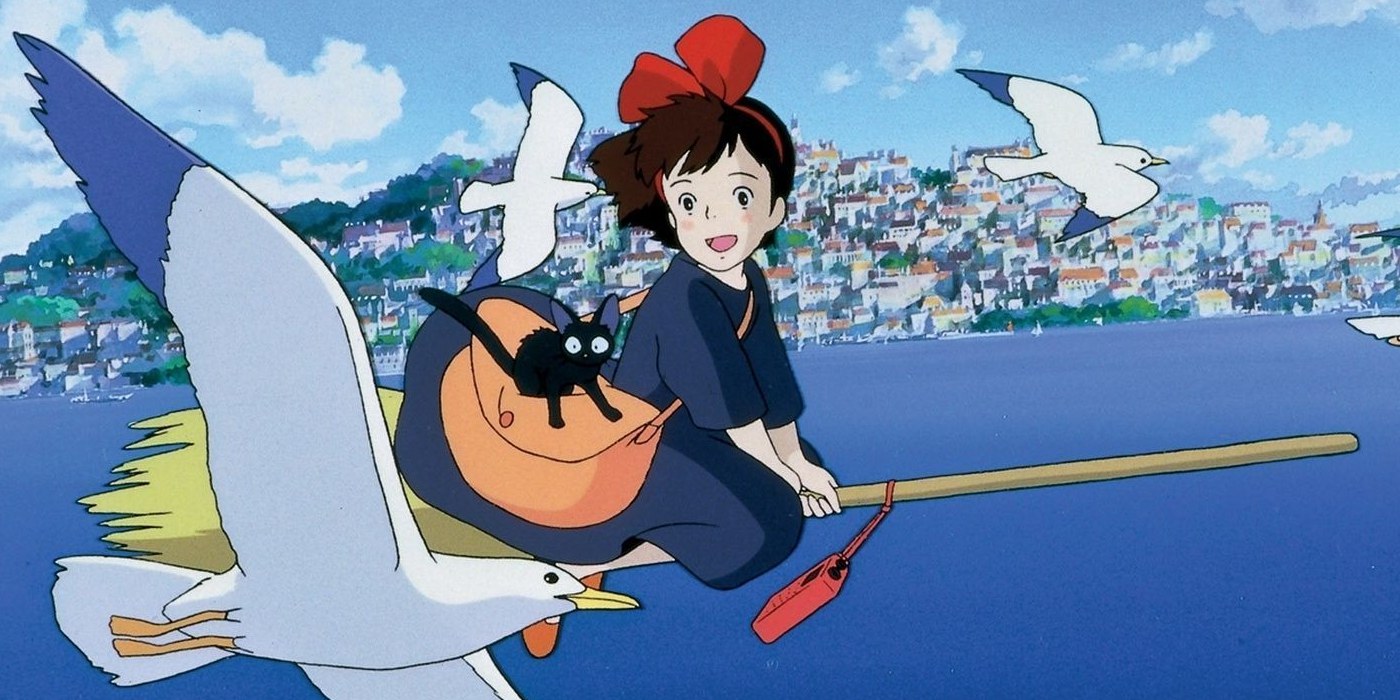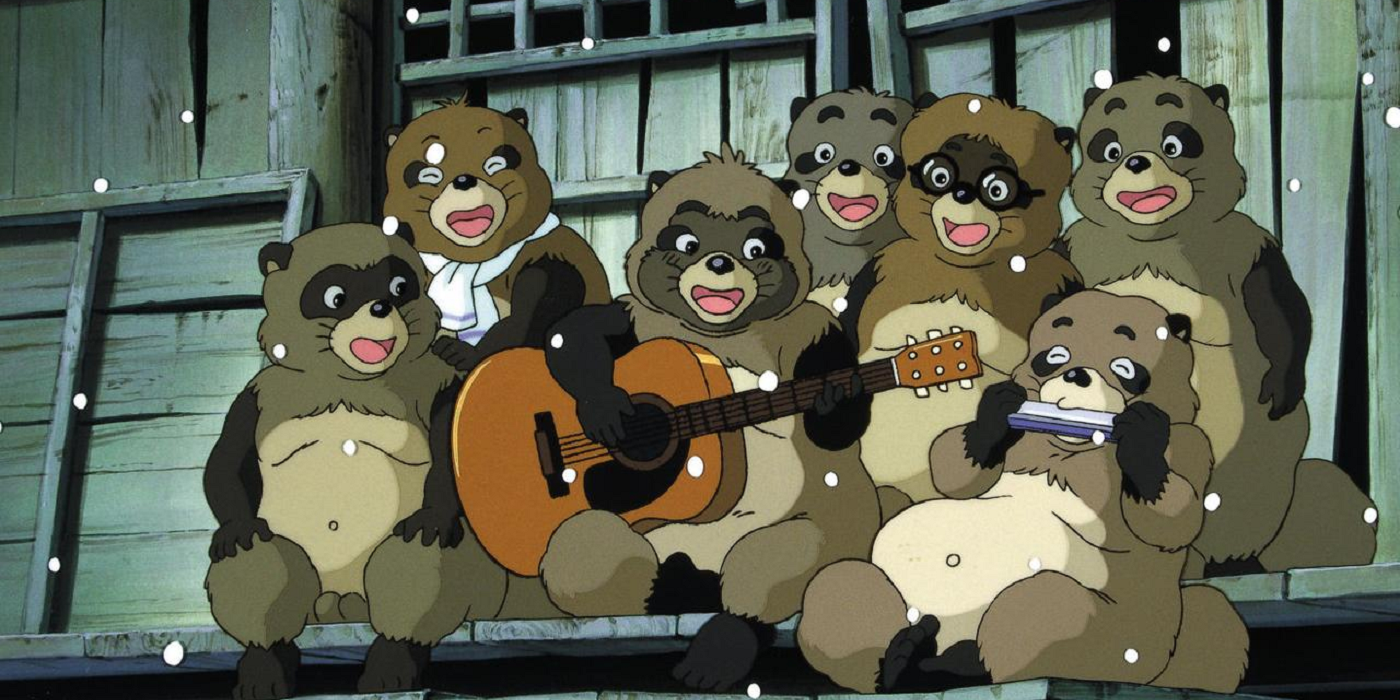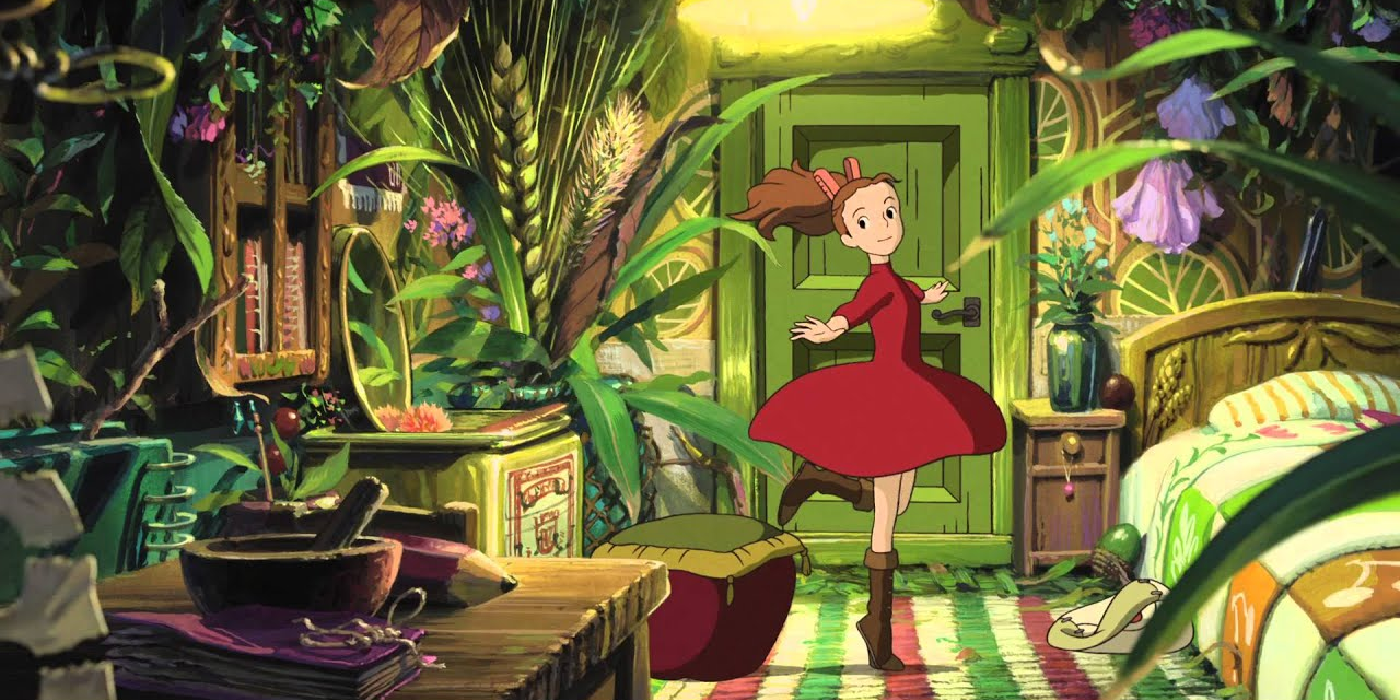A household name in entertainment around the world, it’s hard to think of an anime studio that can come even close to the prestige and renown of Studio Ghibli. With a legacy of over 35 years spent creating some of the most iconic animated films and memorable character designs of all time, picking a clear entry point to jump into anime’s most celebrated studio can be a bit overwhelming.
By taking a look at the creatives, tones, and history behind some of its most famous animated features, Ghibli’s wide and storied output of almost two-dozen feature films can be better approached for newcomers of all ages.
Classic Miyazaki Films: The Core of Studio Ghibli
When most people think of Studio Ghibli, the director Hayao Miyazaki immediately springs to mind as the studio’s creative soul, and with good reason. One of the three co-founders of Studio Ghibli in 1985 along with fellow director Isao Takahata and producer Toshio Suzuki, Miyazaki’s aesthetic style of coupling realistic, atmospheric animation with earthy color pallets and fantastical creature and machine designs has become far and away the brand that Ghibli is known for. As by far the director of the highest number of Ghibli’s features in addition to his pre-Ghibli work, navigating Miyazaki’s work is perhaps as tall an order as getting into the whole studio.
The first two Studio Ghibli films were directed by Miyazaki: Castle in the Sky (1986) and My Neighbor Totoro (1988). Castle in the Sky centers around a boy and girl as they travel to a lost floating fortress propelled by machinery through the sky, and it foreshadows many of the technological, Moebius-like motifs found in later Ghibli films. My Neighbor Totoro centers around two young girls who encounter Japanese forest spirits while navigating their family’s move into a new house. Totoro’s forest spirit designs are some of the most recognizable images of the studio, and the eponymous Totoro has since served as the studio’s logo on every feature.
With these auteur marks established in Ghibli’s first two features, Miyazaki’s work would continue to expand upon similar aesthetics and themes. Kiki’s Delivery Service (1989) and Porco Rosso (1992) expand upon the motif of air travel, centering around a young, broom-riding witch navigating coming-of-age in a new town and a WWI-era fighter pilot who finds himself in the form of anthropomorphic pig. Around the mid-1990s, Miyazaki’s work would return to a deeper exploration of the Japanese youkai first highlighted in Totoro, with Princess Mononoke (1997) and Spirited Away (2001). These two features are among the longest and the most epic in scope of all of Miyazaki and Ghibli’s filmographies, featuring highly detailed examinations of Japanese folklore filtered through the lenses of a late-medieval Japanese epic and a modern-day young girl who finds herself forced to work at a spa for Japanese spirits. The more intense visuals and concentrated Japanese folklore in these two films make them a bit less likely to please young-child audiences, but their animation quality and subtle profundity make them highlights of Miyazaki’s entire filmography.
Heading into the 21st century after Spirited Away, Miyazaki’s current feature filmography is rounded out three more films. Howl’s Moving Castle (2004) is a story about the clash between magic and technology in a war between two fantasy kingdoms, Ponyo (2008) is a modern-day fantasy-comedy borrowing elements from the classic fairy tale The Little Mermaid, and The Wind Rises (2013), a grounded period piece about a Japanese aircraft engineer in the years predating WWII. While The Wind Rises was originally intended as Miyazaki’s final feature, he has since come out of retirement for one more feature, How Do You Live?, set for a release in 2023.
Isao Takahata Films: Eclectic Fare for a Wide Audience
While Hayao Miyazaki has had an inestimable impact on Studio Ghibli’s oeuvre, he is far from the only director of the studio’s legendary films. During his decades’ long tenure at Ghibli, anime legend Isao Takahata (1935-2018) oversaw many of the studio’s most boundary-pushing and ambitious projects.
Takahata’s first feature for the studio was its third feature overall, Grave of the Fireflies (1988). A tragic and grounded story of Japanese civilian life during the waning days of WWII, Grave of the Fireflies is an unflinchingly powerful film, albeit one that shouldn’t be shown to young audiences. Takahata’s more grounded strain is continued with his second Ghibli feature, Only Yesterday (1991), which has an introspective take on 1980s Japanese life as its basis.
For his third film at Ghibli, Takahata turned to a more comedic and fantastical direction with Pom Poko (1994), which chronicles the multi-generational escapades of shape-shifting Japanese tanuki as they observe and fight against the industrial encroachment of a modernizing Japan. Although it relishes in Takahata’s more idiosyncratic sensibilities, the film builds upon the theme of Japanese folklore first explored in My Neighbor Totoro, ultimately paving the way for that theme’s climax in Spirited Away.
For his final two films, Takahata leaned into stylistic innovations resulting in two of Ghibli’s most visually unique offerings. In the comedy film My Neighbors the Yamadas (1999), Takahata employs a unique sketchbook style to comedically relay stories from the daily lives of a Japanese family. For his final film The Tale of Princess Kaguya (2013), Takahata takes inspiration from traditional Japanese art for a fairy-tale like story of Kaguya-hime, a medieval legend about a lady born from the carving of a bamboo shoot. The Tale of Princess Kaguya is the most immediate departure from traditional anime aesthetic in Ghibli’s oeuvre, yet it is also one of the studio’s most subtly moving films. While Isao Takahata’s multifaceted fare skews a little more towards the arcane and the mature than Miyazaki’s works, his films are quintessential to Studio Ghibli’s history, legacy, and style.
Ghibli Mainstays from Other Directors
Isao Takahata and Hayao Miyazaki are Ghibli’s two most famous directors, but the studio has been host to a number of other interesting offerings from beyond the duo. Three of Ghibli’s 21st-century features have been directed by Hayao’s son, Goro Miyazaki: Tales from Earthsea (2006), From Up on Poppy Hill (2011) and Earwig and the Witch (2020). Tales From Earthsea is a visually-stunning yet thinly plotted adaptation of the Earthsea novel series by Ursula K. LeGuin, From Up on Poppy Hill is a more grounded drama set in Japan in the 1960s, and Earwig and the Witch is a fantasy novel adaptation with the distinction of being Ghibli’s first, somewhat ambivalent foray into CGI animated features. (CGI had already been used in the anime series Ronja, the Robber’s Daughter (2014), which was a Ghibli coproduction also directed by Goro.)
Another major director at Ghibli, Hiromasa Yonebayashi, is known for his work on The Secret World of Arrietty (2010) and When Marnie Was There (2015). Arrietty is a fairytale-like story of tiny people living and scavenging between the walls of a country manor, and When Marnie Was There is a PG drama based around a 1960s British novel. Lastly, two family-friendly companion piece pictures can be found in Yoshifumi Kondo’s Whisper of the Heart (1995) and Hiroyuki Morita’s The Cat Returns (2002). Based on the manga of Japanese artist Aoi Hiiragi, these two films focus on the intersections between the human world and a fantasy world rich with imaginative visuals. While the two films aren’t explicit sequels, a minor character named Baron in Whisper of the Hearts is in fact the eponymous feline of The Cat Returns.
In all, Studio Ghibli’s feature film output is as wide as it is engrossing. From family-friendly fare like Kiki’s Delivery Service and Ponyo, to epic-scale adventures like Princess Mononoke and Howl’s Moving Castle, to grounded and often unflinching dramas like Grave of the Fireflies and Only Yesterday, Studio Ghibli has films to impress and engage film and animation lovers of any age.




